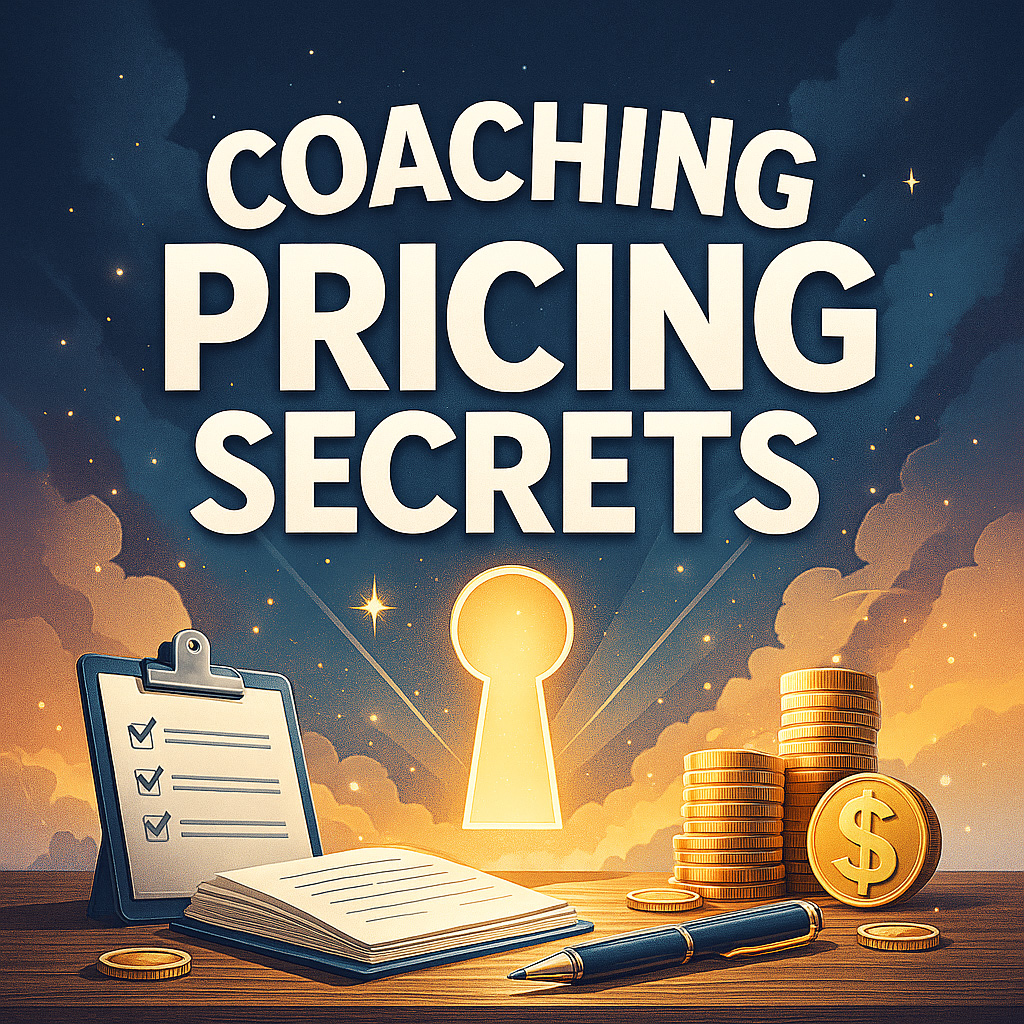Coaching Pricing Secrets: Must-Have Tips for Affordable Success
When it comes to building a successful coaching business, one of the most crucial yet complex decisions you’ll face is how to set your coaching pricing. Striking the perfect balance between affordability and profitability can be challenging, especially when you’re just starting out or trying to scale your services. However, understanding key pricing strategies and secrets can help you attract clients while ensuring your coaching business remains sustainable and rewarding.
In this article, we’ll uncover essential coaching pricing tips that will empower you to confidently price your services for affordable success.
—
Understanding the Importance of Coaching Pricing
Pricing is more than just putting a number on your services—it’s a reflection of the value you provide, your target market, and your brand positioning. Setting your prices too low can undervalue your expertise and make it difficult to grow, while pricing too high without clear justification may alienate potential clients.
To master coaching pricing, it’s important to approach it as a strategic business decision. Consider factors such as your experience, the outcomes you deliver, your niche, and your client’s willingness and ability to pay. This foundational understanding will guide you to choose pricing models that suit your business model and client expectations.
—
Key Coaching Pricing Secrets for Affordable Success
1. Know Your Audience and Their Budget
Identifying your ideal client is the first step towards pricing your coaching services effectively. Understanding your client’s income level, typical challenges, and what they value most about coaching shapes the pricing roadmap.
If you’re targeting entry-level clients or those seeking affordable personal development, offering tiered pricing or packaged services can make your coaching accessible while maintaining profitability.
2. Offer Tiered Pricing Packages
One of the most effective coaching pricing strategies is creating tiered service packages. For example, a basic package may include one-time sessions or group coaching, a mid-tier might offer several sessions with email support, and a premium package could provide one-on-one coaching with personalized resources.
Tiered pricing accommodates different budgets and commitment levels, making your services more enticing to a broader audience. Plus, it naturally upsells clients who want more value.
3. Utilize Value-Based Pricing
Instead of charging just based on hours or sessions, focus on the transformative results your clients will gain. Value-based pricing involves setting fees based on the outcome and impact of your coaching, rather than time spent.
For example, if your coaching helps clients double their income or achieve a major milestone, your prices should reflect that value. This method not only justifies higher pricing but also positions you as a results-driven expert.
4. Start with Introductory Offers
For new coaches or those expanding into fresh markets, introductory offers such as discounted sessions, free discovery calls, or trial packages can attract clients. These offers help build trust, demonstrate your skills, and encourage longer-term engagements.
Ensure the introductory pricing is time-bound or limited in scope to avoid long-term revenue loss. Once clients experience your value, smoothly transition them to your regular pricing.
—
How to Communicate Your Coaching Pricing Confidently
Setting great pricing is only half the battle—communicating it clearly and confidently to clients is equally important. Here are a few tips to help you discuss pricing with assurance:
– Be Transparent: Clearly outline what clients get with each pricing tier. Provide detailed descriptions of sessions, add-ons, and expected outcomes.
– Focus on Value: Highlight the benefits and transformation your coaching provides rather than just the cost. Use testimonials or case studies when possible.
– Address Objections Proactively: Anticipate questions about pricing and have ready responses that reinforce your value and flexibility.
– Practice Your Pitch: Role-play conversations with peers or mentors to build confidence in discussing fees.
—
Additional Tips to Keep Coaching Affordable Yet Profitable
– Leverage Group Coaching: This lowers costs per participant, making coaching more affordable for clients while increasing your income.
– Automate and Streamline: Use scheduling, billing, and communication tools to reduce administrative time and focus more on coaching.
– Continuously Review Pricing: Regularly reassess your pricing as you gain experience, build reputation, and expand your offerings.
– Bundle Services: Combine coaching with workshops, courses, or digital products to create more value and diversify income.
—
Final Thoughts on Coaching Pricing Secrets
Successfully pricing your coaching services doesn’t have to be a guessing game. By understanding your clients, offering flexible packages, focusing on value, and communicating confidently, you set the stage for affordable success.
Remember, your pricing is part of your brand story—make it clear you are a professional who offers meaningful transformation. With the right coaching pricing strategies, you can grow a thriving business that helps more people achieve their goals while propelling your own success.
